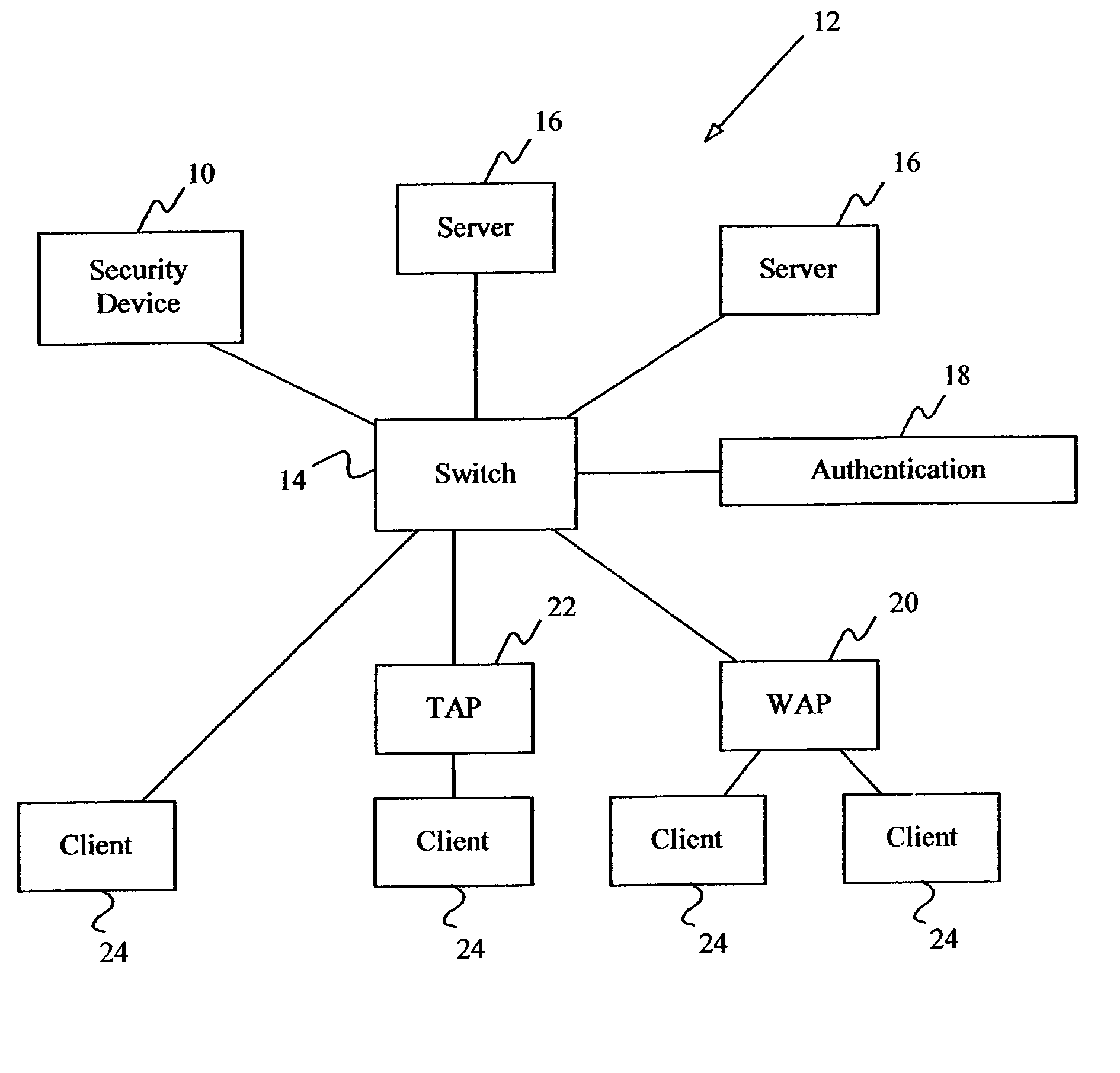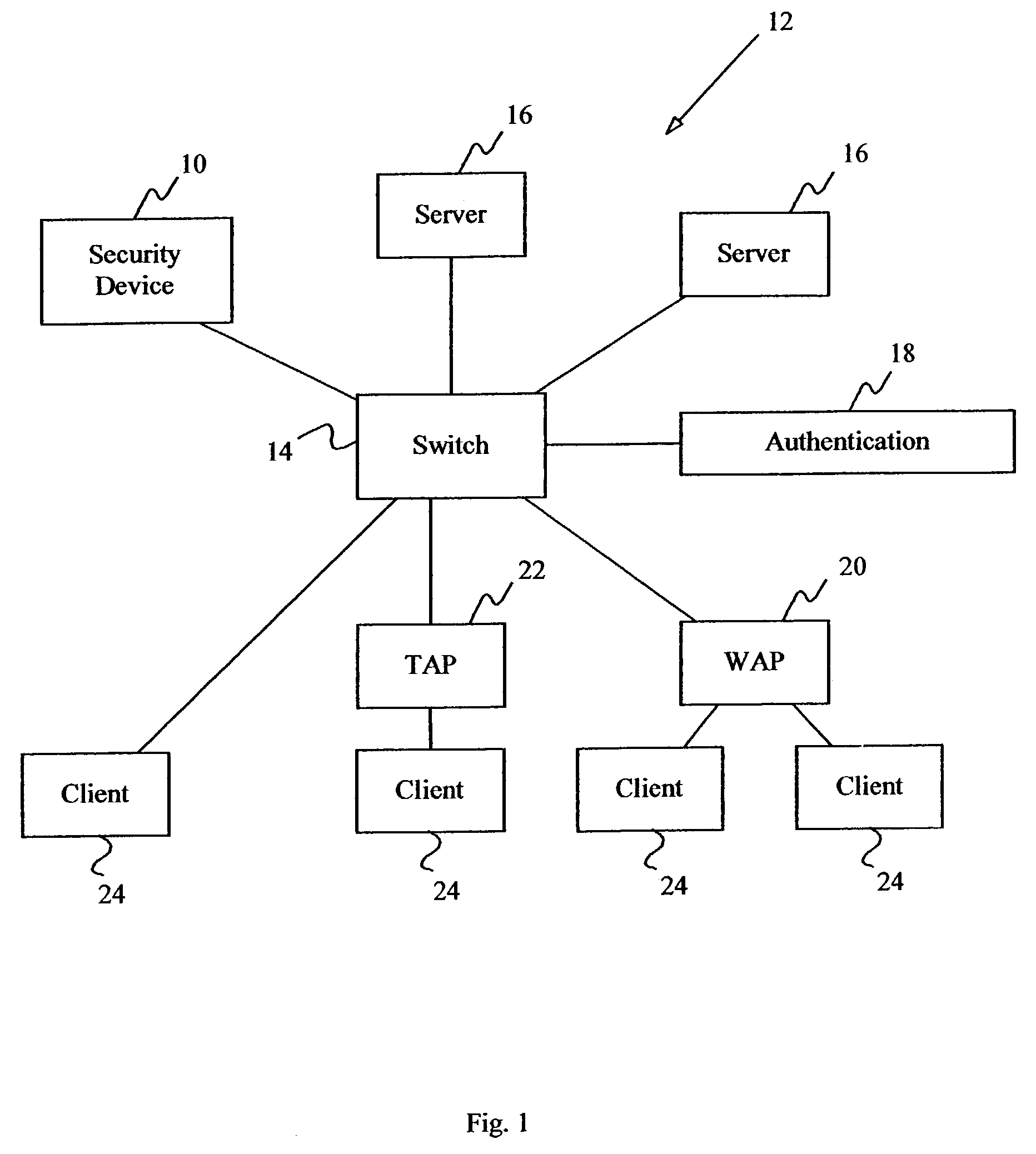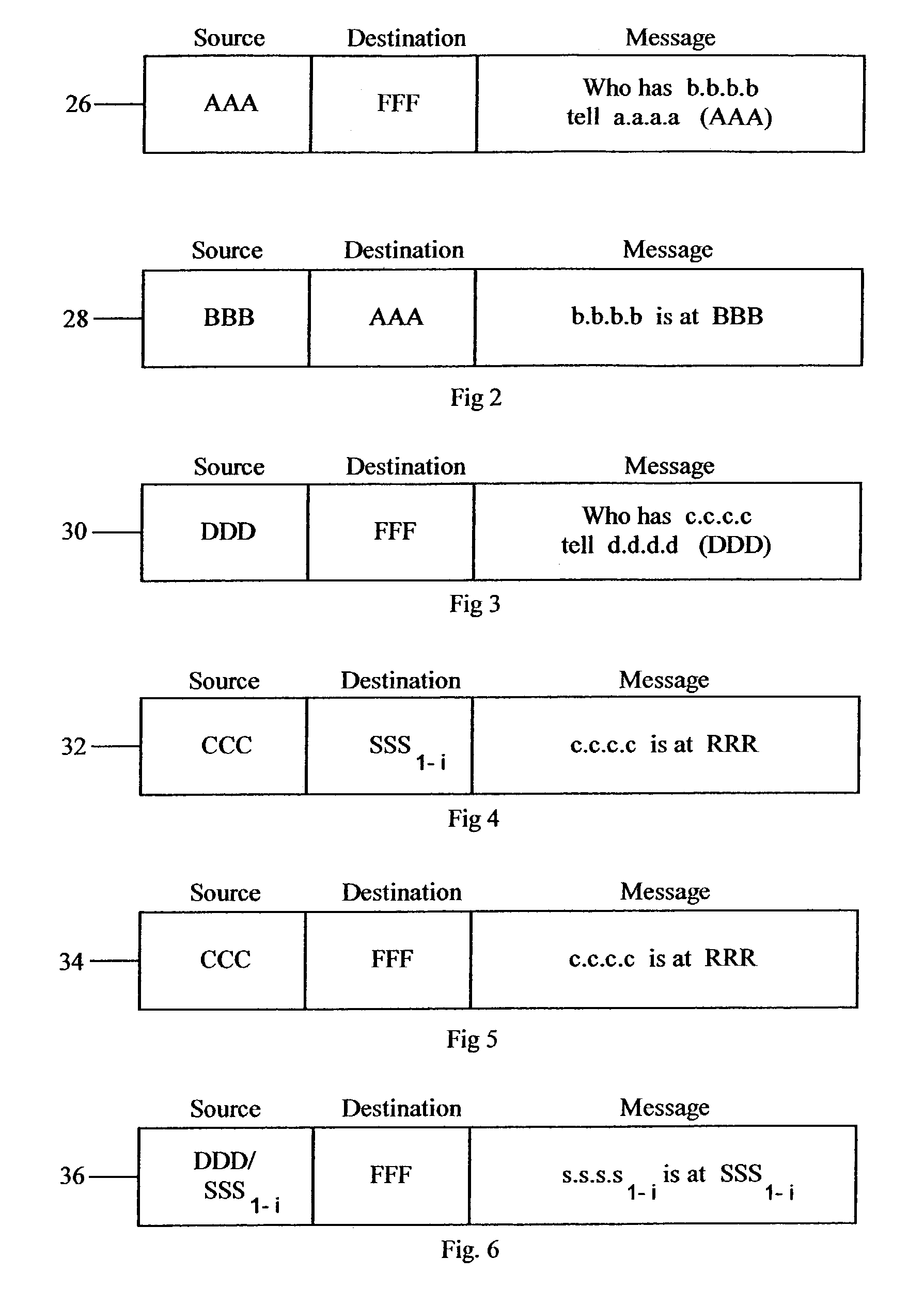Security apparatus and method for local area networks
security apparatus technology, applied in the field of security in a local area network, can solve the problems of low cost for anyone, employees, and companies that are now more vulnerable to intrusion than ever befor
- Summary
- Abstract
- Description
- Claims
- Application Information
AI Technical Summary
Problems solved by technology
Method used
Image
Examples
Embodiment Construction
Overview
[0033]The present invention addresses the three major security problems facing wireless LANs today: 1) access to the internal LAN through the access point, 2) unauthorized wireless access points within the organization, and 3) open nature of flat topologies.
[0034]The present invention is flexible enough to allow quick deployment, extremely scalable, and still very secure. It subverts many common attacks by blocking unauthorized users on the lowest layer possible. Additionally, the present invention secures flat topology networks without reconfiguration of the network to accommodate in-line security devices.
[0035]As depicted in FIG. 1, access security is provided through the use of a security device 10 coupled to a local area network 12 as a peer on network switch 14 in order to control access to protected servers 16 (such as data servers, Internet servers, email servers and the like). Typically, a local area network comprises a multitude of interconnected switches and hubs a...
PUM
 Login to View More
Login to View More Abstract
Description
Claims
Application Information
 Login to View More
Login to View More - R&D
- Intellectual Property
- Life Sciences
- Materials
- Tech Scout
- Unparalleled Data Quality
- Higher Quality Content
- 60% Fewer Hallucinations
Browse by: Latest US Patents, China's latest patents, Technical Efficacy Thesaurus, Application Domain, Technology Topic, Popular Technical Reports.
© 2025 PatSnap. All rights reserved.Legal|Privacy policy|Modern Slavery Act Transparency Statement|Sitemap|About US| Contact US: help@patsnap.com



